Visual Arts Component - Exploring Color, Shape and Form
Description
In this program, we will explore color, shape, and form through explorations of 2d and 3d projects. Students will gain a deeper understanding of how these elements work together to help an artist create their compositions. Students will look closely at the work of American artist Jen Stark.
Learning Targets
“I Can…”
- Create a 3-D form with 2-D materials.
- explore the relationship between shape and form to create a composition.
- Explore chemical and physical changes with heat.
Essential Questions
- How do we use color, shape and form to create 2d and 3d compositions?
Curriculum Standards
MGSE4.G.1 Draw points, lines, line segments, rays, angles (right, acute, obtuse), and perpendicular and parallel lines. Identify these in two-dimensional figures.
MGSE4.G.3 Recognize a line of symmetry for a two-dimensional figure as a line across the figure such that the figure can be folded along the line into matching parts. Identify line-symmetric figures and draw lines of symmetry.
MGSE5.G.3 Understand that attributes belonging to a category of two-dimensional figures also belong to all subcategories of that category. For example, all rectangles have four right angles and squares are rectangles, so all squares have four right angles.
S5P1. Obtain, evaluate, and communicate information to explain the differences between a physical change and a chemical change.
Arts Standards
VA4.CR.3 Understand and apply media, techniques, processes, and concepts of two dimensional art.
VA4.CR.4 Understand and apply media, techniques, processes, and concepts of three dimensional art.
VA5.CR.3 Understand and apply media, techniques, processes, and concepts of two dimensional art.
VA5.CR.4 Understand and apply media, techniques, processes, and concepts of three dimensional works of art.
Content Vocabulary
- Gravity - the force that attracts a body toward the center of the earth, or toward any other physical body having mass.
- 3-Dimensional Shape - a three-dimensional shape can be defined as a solid figure or an object or shape that has three dimensions – length, width and height.
- Edges - the outside limit of an object, area, or surface; a place or part farthest away from the center of something.
- Vertices - The common endpoint of two or more rays or line segments.
- Faces - In any geometric solid that is composed of flat surfaces, each flat surface is called a face.
- Surface Area - The surface area of a solid object is a measure of the total area that the surface of the object occupies.
- Flow - formalizes the idea of the motion of particles in a fluid.
Arts Vocabulary
- Primary - are basic colors that can be mixed together to produce other colors. They are usually considered to be red, yellow and blue.
- Secondary - a color resulting from the mixing of two primary colors.
- Composition - the arrangement of elements within a work of art.
- Pattern - an underlying structure that organizes surfaces or structures in a consistent, regular manner. Patterns can be described as a repeating unit of shape or form.
Formative Assessment
- Daily student process reflections.
Summative Assessment
- Artist statements discussing the themes present in all of their pieces created over the session.
Materials
- Pencils
- Sketchbook
- illustration markers
- Matte photo paper
- scissors
- glue sticks
- hot glue gun
- crayons
- cardstock
- Canvas panel
- heat gun or hair dryer
Activating Strategy (5-10 min)
Students looked closely at the art of American Artist Jen Stark. We watched a video of Stark discussing her process.
Main Activity
PROCESS:
Day 1:
We discussed the color wheel and basic color theory, including warm and cool colors. Students explored what kind of shapes would create the illusion of movement or drips.
Students used illustration markers to create a repeating pattern inspired by the work of Stark.
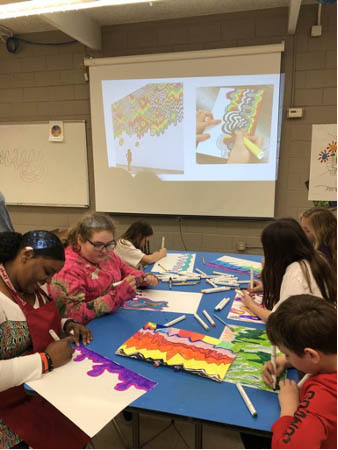
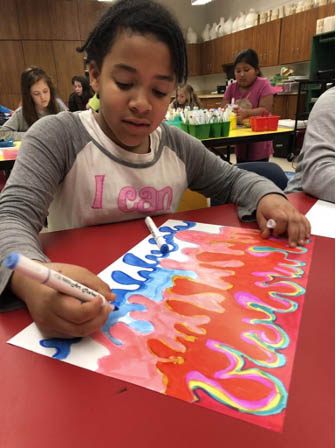
Day 2:
We watched a video of Jen Stark’s animations and discussed the relationship between the animations and music.
https://www.youtube.com/watch?v=svakc8t1UYY and created a self portrait photograph incorporating Stark’s art.
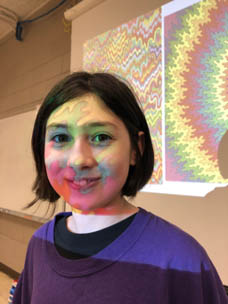
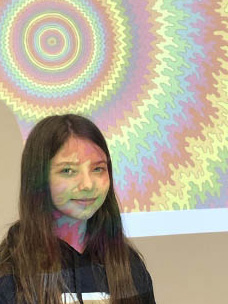
We looked closely at Jen Stark’s relief sculptures. Students used colorful cardstock to explore relief sculpture.
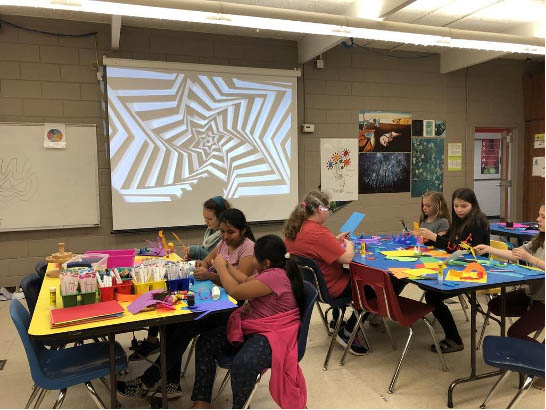
Day 3:
We explored material movement in a new way. Students created relief sculptures with crayons on canvas. They predicted how the wax of the crayon might move and change if heated.
They used heat guns to melt the wax. We discussed physical and chemical changes and states of matter.
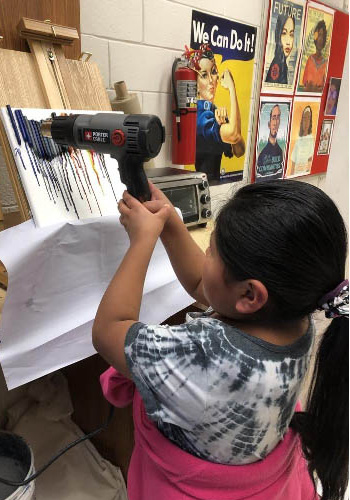
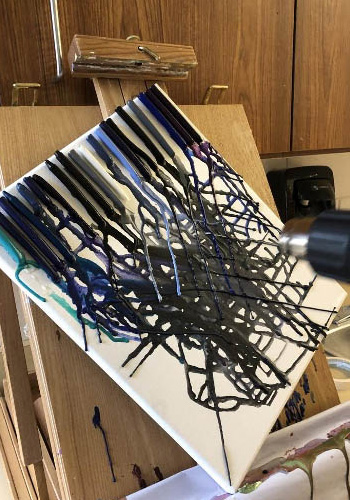
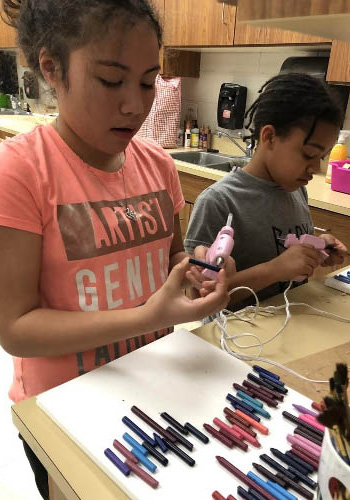
Classroom Tips:
Set the classroom up in stations. Most students will be working on 2d and 3d compositions. This limits the number of students using heat guns. We had 2 heat gun stations. They were monitored by an adult at all times.
Reflection Questions
- How did you use color and pattern to create variety in your drip composition?
- How did you create 3d forms with paper?
- How did heat and position change your relief sculpture?
Differentiation
BELOW GRADE LEVEL:
- Provide a piece of paper with the first “drip”. Students will fill in the rest of the composition.
- Use pre cut shapes for collage or sculpture building.
ABOVE GRADE LEVEL:
- Encourage students to work larger and collaboratively on the drip illustration.
- Set a height perimeter for the cardstock relief sculpture, encouraging students to use measuring tools and piece together paper to reach the required height.
EL STUDENTS:
- Demonstrate each hands on technique before students begin their work.
Credits
Shannon Green
